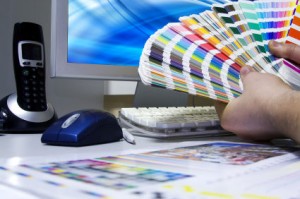 Designing the branding logos of other corporations is only part of the work of a successful graphic designer. In fact, a designer’s own personal business logo can be just as crucial for drawing in new clients as a successful portfolio of past work experiences. Because of this, designing your own logo should be done carefully and strategically, closely examining exactly what message you want it to send out about you and your designing business. Check out these tips for constructing a successful business logo.
Designing the branding logos of other corporations is only part of the work of a successful graphic designer. In fact, a designer’s own personal business logo can be just as crucial for drawing in new clients as a successful portfolio of past work experiences. Because of this, designing your own logo should be done carefully and strategically, closely examining exactly what message you want it to send out about you and your designing business. Check out these tips for constructing a successful business logo.
1) It’s all in the font: While some may argue that this is a bit of an overstatement, there’s still truth in it. Typography choices, whether good or bad, have a huge potential to influence client’s opinion of you and your work. Bold, chunky fonts can appear childish to some, but if positioned wisely can also lead to recognizable, strong-statement logos. Thinner typefaces can get lost in the bigger picture if their colors aren’t carefully selected. Flowery/curly fonts can conjure up thoughts vintage artwork and are typically associated with female designers. Overall, when choosing a primary font for your logo design, carefully assess what you want the logo to say about you; then choose a typeface accordingly.
2) Watch the placement: Poorly placed logos are a huge complaint of clients. Make sure that your own logo is constantly placed in strategic and non distracting spots on your work; a corner spot on digital artwork designs or photographs is appropriate, while a top-center spot will work for letterheads. A logo should be your branding image on your work, but should not detract from the rest of the art.
3) Going big could mean not going home: In other words, bigger really isn’t typically better when it comes to graphic designer logos. Most businesses are seeking smaller, cleverly concise logos for themselves, and therefore they will exam your own logo to see if you can deliver their style of product. Keep your design large enough to be read/understood, but small enough to be discretely stamped around your website, emails, business cards, and letterheads.
4) Limit the rainbow: A good logo should have three colors, at the very most. Two-colored or one-colored designs are more ideal for professional businesses. Choose a simple color pallet (or just go with black-and-white) and use a main color that is strong enough to be seen but not overwhelm. Multi-colored logos tend to look childlike; avoid this problem by representing your business with a classy, sparsely colored design.



